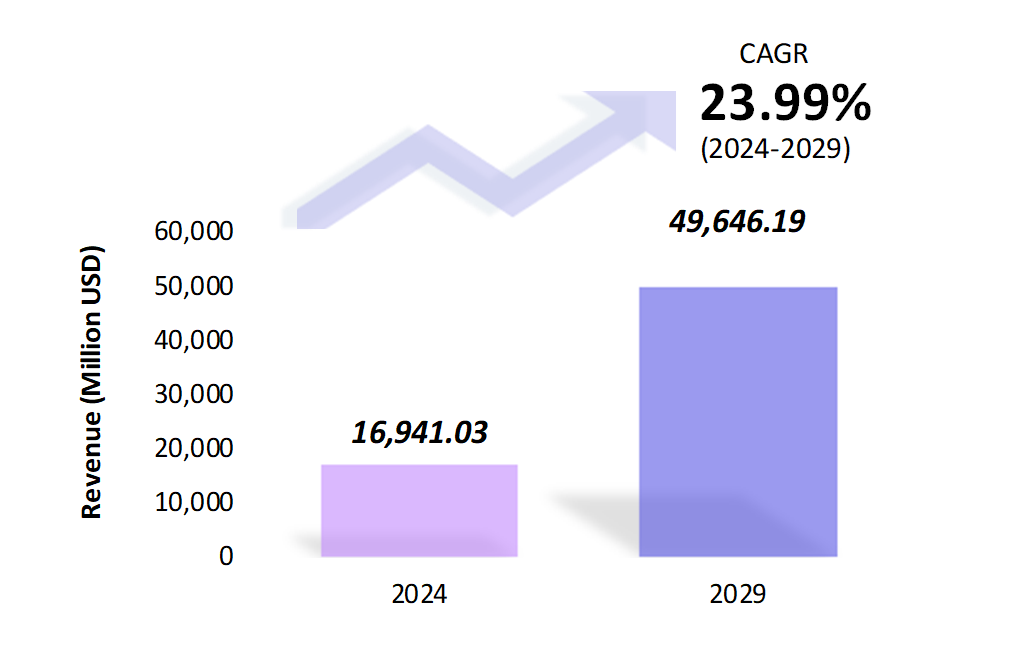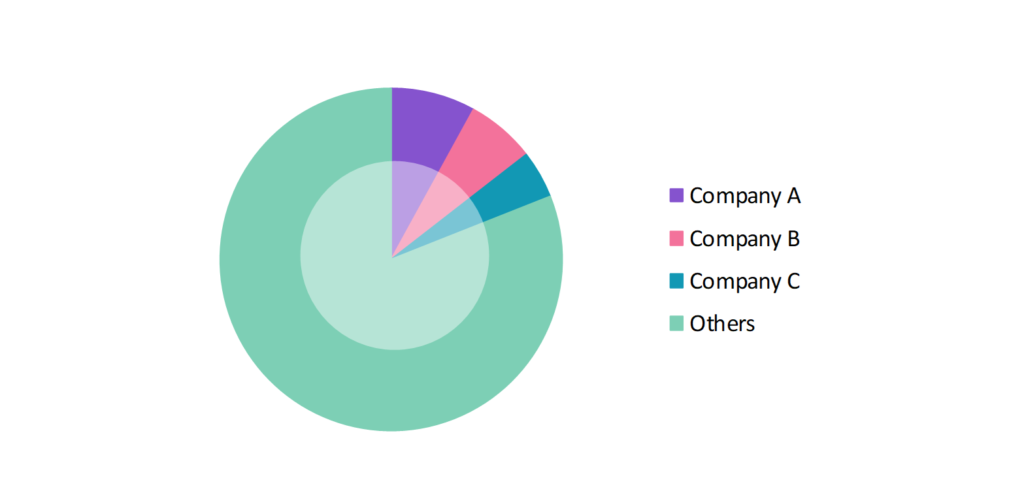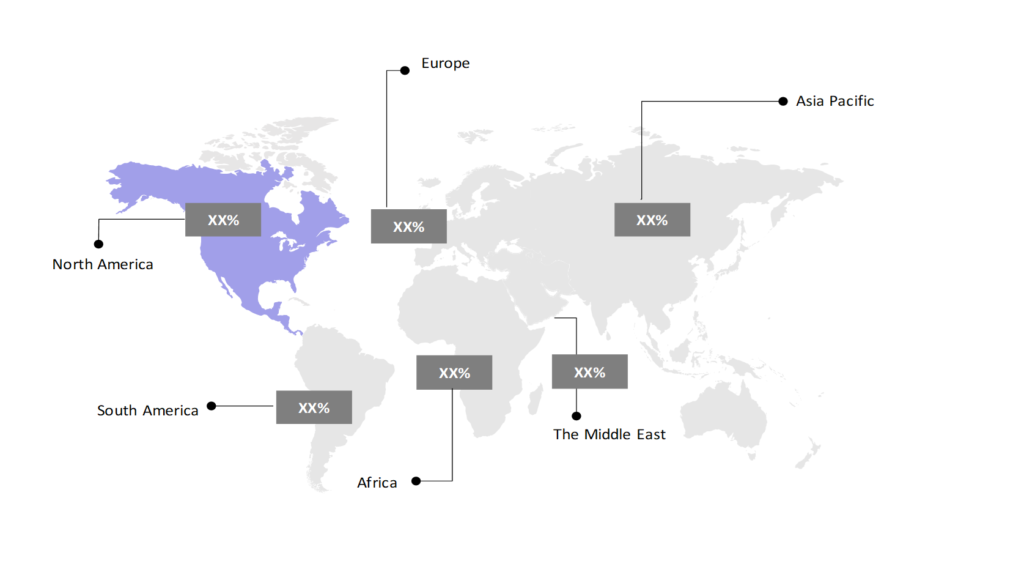VR Headset Market Outlook: Size, Share, Trends & Growth Analysis (2024-2029)
The market report presents a thorough analysis segmented by Product (PC Based, Console Based, Smartphone Based, Standalone); by Material (Plastic, Paper, Others); by End User (Consumer Electronics, Healthcare, Games and Entertainment, Automobile, Education, Real Estate, Military); by Geography (North America, South America, Asia Pacific, Europe, The Middle East, Africa).
Outlook

- The VR headset market is estimated to be at USD 16,941.03 Mn in 2024 and is anticipated to reach USD 49,646.19 Mn in 2029.
- The VR headset market is registering a CAGR of 23.99% during the forecast period of 2024-2029.
- The global VR headset market is driven by increasing adoption in gaming, healthcare, education, and entertainment industries. Recent advancements in VR technology, such as improved resolution, reduced latency, and enhanced comfort, are fueling market expansion.
Request a free sample.
Ecosystem

- The participants in the global VR headset industry dominate the market through continuous innovation, extensive product lines, and strong brand recognition.
- These companies primarily invest in R&D, product diversification to cater to different market segments, along with strategic collaborations for expanding VR technology and content.
- Several important entities in the VR headset market include Zeiss Group; Meta Platforms, Inc.; HTC Corp.; LG Electronics U.S.A. Inc.; HP Inc.; and others.
Ask for customization.
Findings
| Attributes | Values |
|---|---|
| Historical Period | 2018-2022 |
| Base Year | 2023 |
| Forecast Period | 2024-2029 |
| Market Size (2024) | USD 16,941.03 Mn |
| Market Size (2029) | USD 49,646.19 Mn |
| Growth Rate | 23.99% CAGR from 2024 to 2029 |
| Key Segments | Product (PC Based, Console Based, Smartphone Based, Standalone); Material (Plastic, Paper, Others); End User (Consumer Electronics, Healthcare, Games and Entertainment, Automobile, Education, Real Estate, Military); Geography (North America, South America, Asia Pacific, Europe, The Middle East, Africa) |
| Key Vendors | Zeiss Group; Meta Platforms, Inc.; HTC Corp.; LG Electronics U.S.A. Inc.; HP Inc. |
| Key Countries | The US; Canada; Mexico; Brazil; Argentina; Colombia; Chile; China; India; Japan; South Korea; The UK; Germany; Italy; France; Spain; Turkey; UAE; Saudi Arabia; Egypt; South Africa |
| Largest Market | North America |
Get a free quote.
Trends
- Integration with Augmented Reality: The line between VR and AR is increasingly blurring, with companies exploring mixed reality experiences. In 2023, Apple hinted at the development of a combined VR/AR headset, which could seamlessly switch between virtual and augmented reality modes, pushing the boundaries of immersive technology.
- Focus on Accessibility in VR Design: There is a growing trend towards making VR headsets more accessible to individuals with disabilities. In 2023, Oculus added new accessibility options in its headsets, such as adjustable interface elements and voice commands, to cater to users with different needs.
- Virtual Collaboration Tools in the Workplace: Virtual reality is increasingly being used for remote collaboration. In 2023, Microsoft introduced new features in Microsoft Mesh, enabling teams to collaborate in a shared virtual space, enhancing team interactions without the need for physical presence.
Speak to analyst.
Catalysts
- Expanding Gaming Industry: The gaming industry remains the largest consumer of VR headsets. In 2023, the release of popular VR titles like Half-Life: Alyx and Resident Evil 4 VR significantly boosted headset sales, with gamers seeking immersive experiences driving market demand.
- Healthcare and Medical Applications: VR headsets are increasingly being used in healthcare for pain management, therapy, and surgical training. In 2023, Johns Hopkins University used VR headsets to perform a complex spinal surgery, showcasing the potential of VR in enhancing medical procedures and outcomes.
- Government Initiatives: Governments and military organizations are investing in VR for training and simulation. In 2023, the U.S. Department of Defense expanded its VR training programs, using VR headsets for mission rehearsals and combat simulations, driving growth in the defense sector.
Inquire before buying.
Restraints
- Integration with Other Technologies: Integrating VR with other emerging technologies such as 5G, AI, and IoT presents technical and logistical challenges. In 2023, companies like Qualcomm faced difficulties in ensuring seamless VR experiences due to latency and bandwidth issues, slowing down the rollout of next-generation VR applications.
- Battery Life Limitations: Battery life is a critical issue for standalone VR headsets. In 2023, users of the Oculus Quest 2 reported that the device’s battery life, which averages around 2-3 hours of continuous use, was insufficient for longer gaming sessions or professional applications. This limitation hampers the adoption of VR for extended activities, especially in fields like education and business.
- Limited Field of View (FOV): The field of view in many VR headsets is still relatively narrow, which can detract from the immersive experience. In 2023, users of popular headsets like the HTC Vive and Valve Index highlighted that the FOV, often around 110 degrees, does not fully mimic the human eye’s natural range. Expanding the FOV without compromising other aspects such as weight and comfort remains a technical challenge for VR manufacturers.
Personalize this research.
Hotspot

Explore purchase options.
Table of Contents
| 1. Introduction 1.1. Research Methodology 1.2. Scope of the Study 2. Market Overview / Executive Summary 2.1. Global VR Headset Market (2018 – 2022) 2.2. Global VR Headset Market (2023 – 2029) 3. Market Segmentation 3.1. Global VR Headset Market by Product 3.1.1. PC Based 3.1.2. Console Based 3.1.3. Smartphone Based 3.1.4. Standalone 3.2. Global VR Headset Market by Material 3.2.1. Plastic 3.2.2. Paper 3.2.3. Others 3.3. Global VR Headset Market by End User 3.3.1. Consumer Electronics 3.3.2. Healthcare 3.3.3. Games and Entertainment 3.3.4. Automobile 3.3.5. Education 3.3.6. Real Estate 3.3.7. Military 4. Regional Segmentation 4.1. North America 4.1.1. The US 4.1.2. Canada 4.1.3. Mexico 4.2. South America 4.2.1. Brazil 4.2.2. Argentina 4.2.3. Colombia 4.2.4. Chile 4.2.5. Rest of South America 4.3. Asia Pacific 4.3.1. China 4.3.2. India 4.3.3. Japan 4.3.4. South Korea 4.3.5. Rest of Asia Pacific 4.4. Europe 4.4.1. The UK 4.4.2. Germany 4.4.3. Italy 4.4.4. France 4.4.5. Spain 4.4.6. Rest of Europe 4.5. The Middle East 4.5.1. Turkey 4.5.2. UAE 4.5.3. Saudi Arabia 4.5.4. Rest of the Middle East 4.6. Africa 4.6.1. Egypt 4.6.2. South Africa 4.6.3. Rest of Africa 5. Value Chain Analysis of the Global VR Headset Market 6. Porter Five Forces Analysis 6.1. Threats of New Entrants 6.2. Threats of Substitutes 6.3. Bargaining Power of Buyers 6.4. Bargaining Power of Suppliers 6.5. Competition in the Industry 7. Trends, Drivers and Challenges Analysis 7.1. Market Trends 7.1.1. Market Trend 1 7.1.2. Market Trend 2 7.1.3. Market Trend 3 7.2. Market Drivers 7.2.1. Market Driver 1 7.2.2. Market Driver 2 7.2.3. Market Driver 3 7.3. Market Challenges 7.3.1. Market Challenge 1 7.3.2. Market Challenge 2 7.3.3. Market Challenge 3 8. Opportunities Analysis 8.1. Market Opportunity 1 8.2. Market Opportunity 2 8.3. Market Opportunity 3 9. Competitive Landscape 9.1. Zeiss Group 9.2. Meta Platforms, Inc. 9.3. HTC Corp. 9.4. LG Electronics U.S.A. Inc. 9.5. HP Inc. 9.6. Company 6 9.7. Company 7 9.8. Company 8 9.9. Company 9 9.10. Company 10 |
Know the research methodology.
VR Headset Market – FAQs
1. What is the current size of the VR headset market?
Ans. In 2024, the VR headset market size is USD 16,941.03 Mn.
2. Who are the major vendors in the VR headset market?
Ans. The major vendors in the VR headset market are Zeiss Group; Meta Platforms, Inc.; HTC Corp.; LG Electronics U.S.A. Inc.; HP Inc.
3. Which segments are covered under the VR headset market segments analysis?
Ans. The VR headset market report offers in-depth insights into Product, Material, End User, and Geography.
